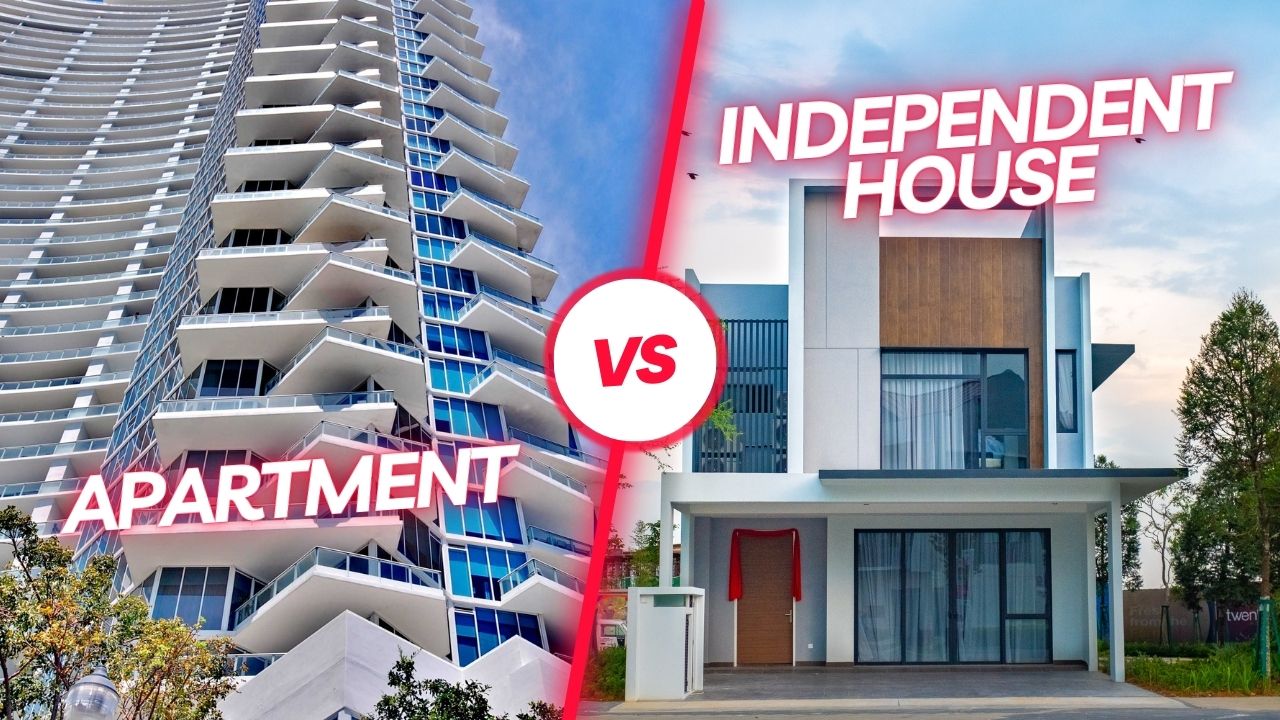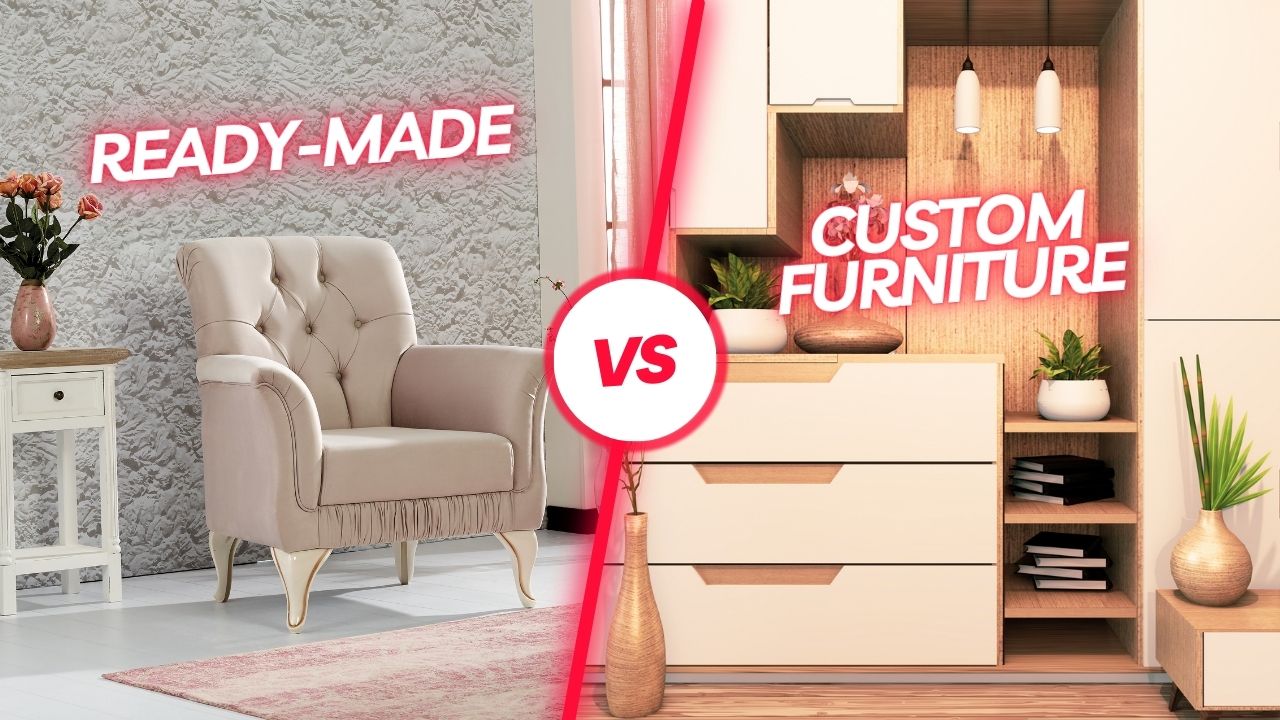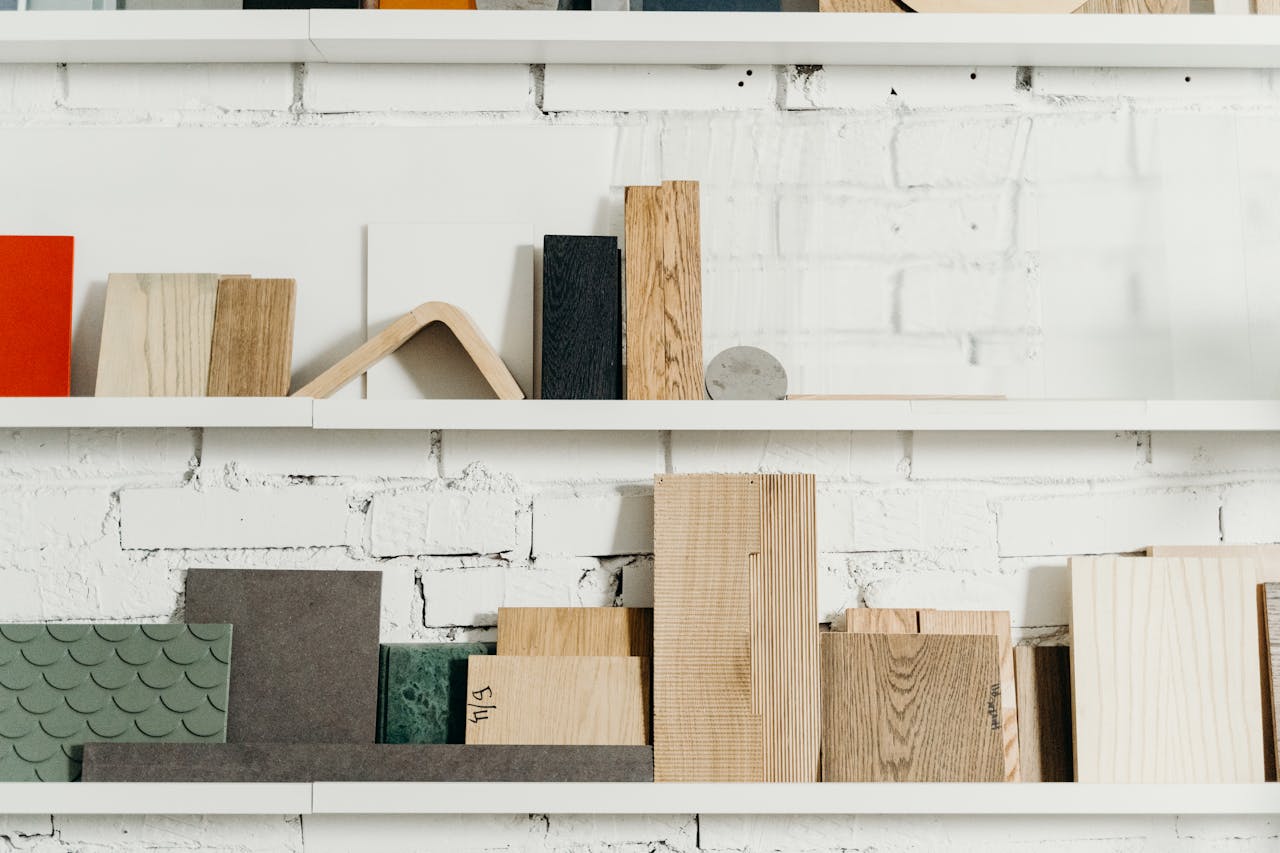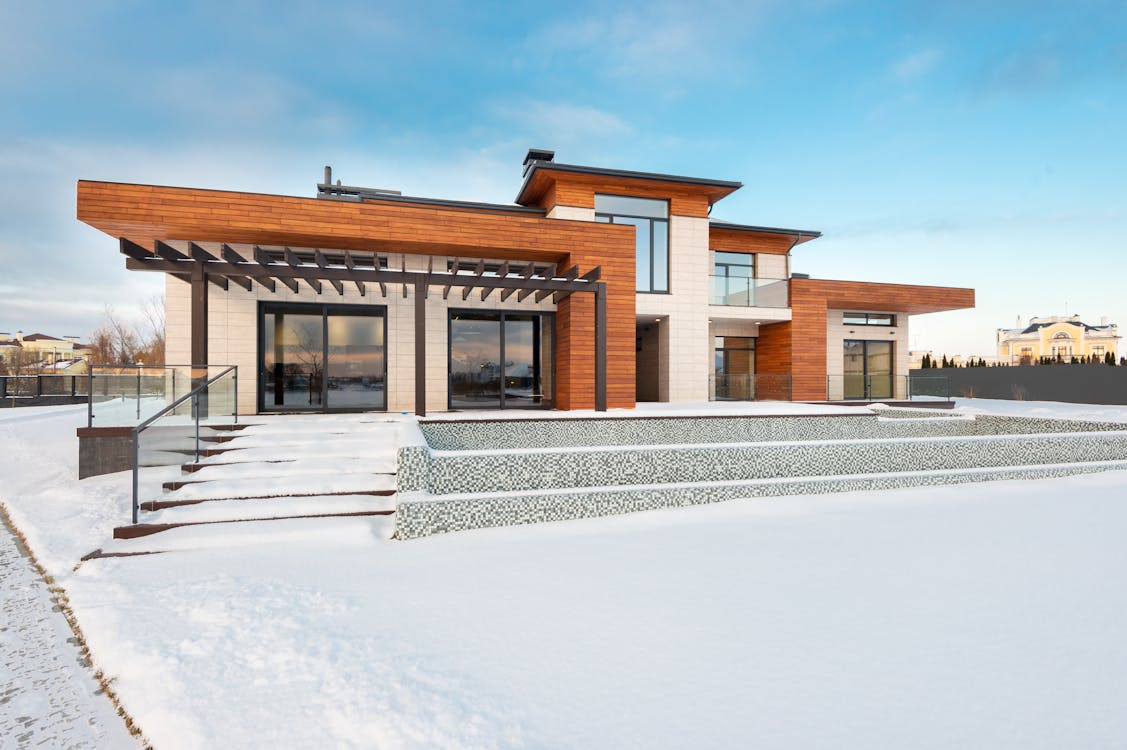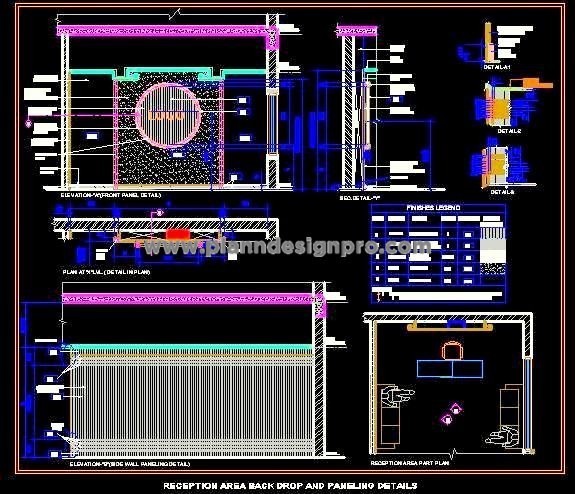False ceilings or suspended ceilings
have become an essential part of modern interiors. From bedrooms to lobbies, office spaces to lounges, a false ceiling comparison guide helps choose the right material. In addition to adding to the aesthetics of the space, false ceilings can help conceal the hideous electrical wiring and air-conditioning ducts. These
enhance the beauty of the space by giving it a clean look. The ceiling can be
designed in several ways. False ceilings can be achieved in varied finishes and
styles depending on the taste of the residents. Many materials can be used to
construct a false ceiling; however, Gypsum and Plaster of Paris (POP) are two
materials that are used the most to create false ceilings.
Many materials can be used to construct a false ceiling; however, Gypsum vs POP false ceiling is the most debated choice among homeowners. Let’s dive into the details to help you decide the best false ceiling material for your home-:
Gypsum False Ceiling
Gypsum false ceilings are shaped using prefabricated gypsum boards. These are then mounted on a metal grid suspended from the ceiling. Gypsum boards are available in various sizes. Since these are manufactured in the factories, they provide a consistent and seamless finish to the spaces. The boards can be cut according to the design and screwed into the metal frame. However, to understand if gypsum is the right material for constructing a false ceiling in your home, the following are the features of gypsum false ceiling -:
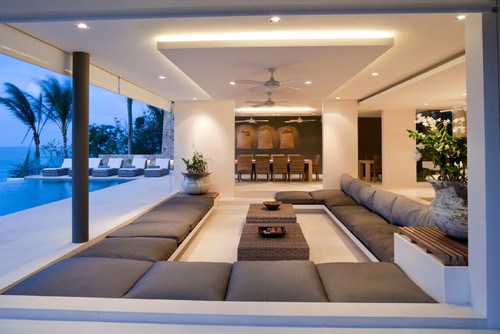
Photo by Synergy Property Group - More living room photos
1. Design and customization
Gypsum boards are efficient
where the ceiling designs are simple, as these are not very flexible when creating curves. Since these are available in standard panel sizes,
mouldability is an issue in intricate designs. The material can
be easily paired with glass, plywood, etc., to create an interesting play of
surfaces. If there are curves or cornices to be incorporated, then POP
would have to be used to get the job done for that particular segment.
Tip – One should consider the available board sizes while designing the ceiling to avoid excess wastage.
2. Installation and Labour
requirements
Installation is fast and
time-saving since the prefabricated boards must be mounted over the metal
grid suspended from the ceiling. It is easy and mess-free at the same time. The
installation can be handled by semi-skilled labour.
3. Finish
Owing to the factory-made nature of the gypsum boards, a seamless and neat finish is achieved with minimal joints. The surface achieved, therefore, is homogenous and consistent. Joints are filled with POP paste for a smooth look, a critical factor in a false ceiling comparison guide.
4. Cost Feasibility
When it comes to the cost feasibility, these are a little costlier when
compared to POP false ceilings.
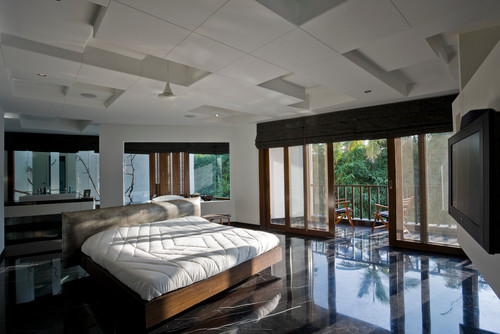
Photo by Fulcrum Studio - Search bedroom pictures
5. Durability and Life
Gypsum boards are highly
durable and can last for many years. However, cracks may develop on gypsum
boards around the joints.
6. Maintenance and Repairs
Gypsum false ceilings are easy
to clean. However, care has to be taken as these can be affected by moisture that
seeps in through the ceiling seepage or seepage from air conditioning ducts.
The moisture can result in fungal growth, thus distorting the form of the
ceiling. Therefore, select the boards that are treated and moisture-resistant.
Repairs can be labour-intensive, a notable drawback in the Gypsum ceiling pros and cons discussion.
7. Thermal Insulation
Gypsum False ceilings provide thermal
insulation and are fire retardants as well.
POP False Ceiling
A POP false ceiling is made using a
slurry of Plaster of Paris and water. The slurry is applied on a suspended
metal frame covered with chicken mesh. After the paste dries off, the surface is sanded to attain a smooth finish, and Voila! It's ready! Following are the
features of the POP false ceiling to help you decide on the best material for
the false ceiling that you desire –

Photo by HoneyBee Designz - Search living room design ideas
1. Design and customization
POP is a material that gives the flexibility to design and play with geometry as the material is mouldable and adapts nicely to the curves. The material can be used to create seamless corners. It gives maximum flexibility for design and customization. It makes the perfect base for the paint. The false ceiling can be designed by incorporating materials such as plywood, glass, etc., with POP.
2. Installation and Labour
requirements
Installation of POP
ceilings is a little slow and time-consuming as one needs to make the proper
framework to support the POP paste. The paste has to be prepared in the right
proportions to avoid any cracks. The paste has to be completely dried up before sanding to achieve smoothness of the surface. The process is a little messy
as well.
In order to achieve a seamless
finish with POP, one needs to involve skilled and experienced labour to create
the false ceiling.
3. Finish
The finish achieved can
vary from average to fine depending on the skill and workmanship of the labour
involved. Thus, it becomes essential to hire experienced labour to
work with POP to achieve a seamless finish.
4. Cost Feasibility
When compared with gypsum false ceilings, these prove to be a little reasonable (on average, 25% reasonable). However, the labour charges are comparatively higher. The labour charges are dependent on the design of the ceiling and, more importantly, on achieving the utmost precision and finesse.
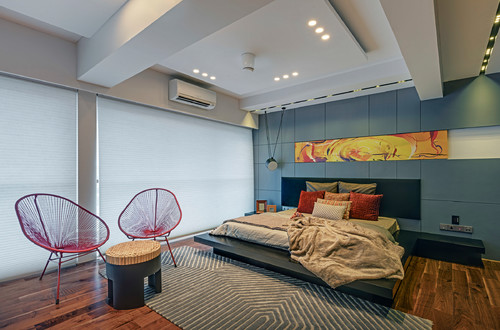
Photo by AVN Interiors - More bedroom photos
5. Durability and Life
POP false ceilings are
pretty durable and have a long life span and minimal signs of wear and tear in the
long run.
6. Maintenance and Repairs
These are quite easy to
maintain and care for. In addition, in a scenario where repair is required,
that particular segment could be cut and reworked without damaging the
entire ceiling.
7. Thermal insulation
POP false ceilings have thermal
insulation properties and are fire retardants.
False ceilings have become an indispensable element of modern interiors. It is a way to impart a clean and clutter-free look to your space. One can design the false ceiling with the desired finish and effects in several ways. Both gypsum and POP have their sets of advantages and disadvantages. Analysis of both materials across seven features will help you decide the best material for your home. Remember that out of the two none is inferior, it is a matter of preferences that comes into play while finalizing the material. For intricate designs, POP ceiling advantages shine. Gypsum ceiling pros and cons make it a strong contender for quick installation and seamless finishes.
Bonus Tips:
- Whether you go in for
Gypsum or POP, for the long life of your false ceilings, ensure that you use
good quality metal for the frame.
- If you are short on time or the design is very simple and includes straight lines and you do not hesitate to spend a tad bit more, go for a gypsum false ceiling. However, if you have the luxury of time and a heart set on a curvilinear design, choose POP for your dream false ceiling.
Still confused about ceiling options? Explore 7 Popular False Ceiling Materials for Homes" to find the perfect fit!
also, From materials to costs, we’ve got you covered! Read Everything About False Ceiling: Materials & Costs now!
Please feel free to share your ideas and thoughts in the comments below!






